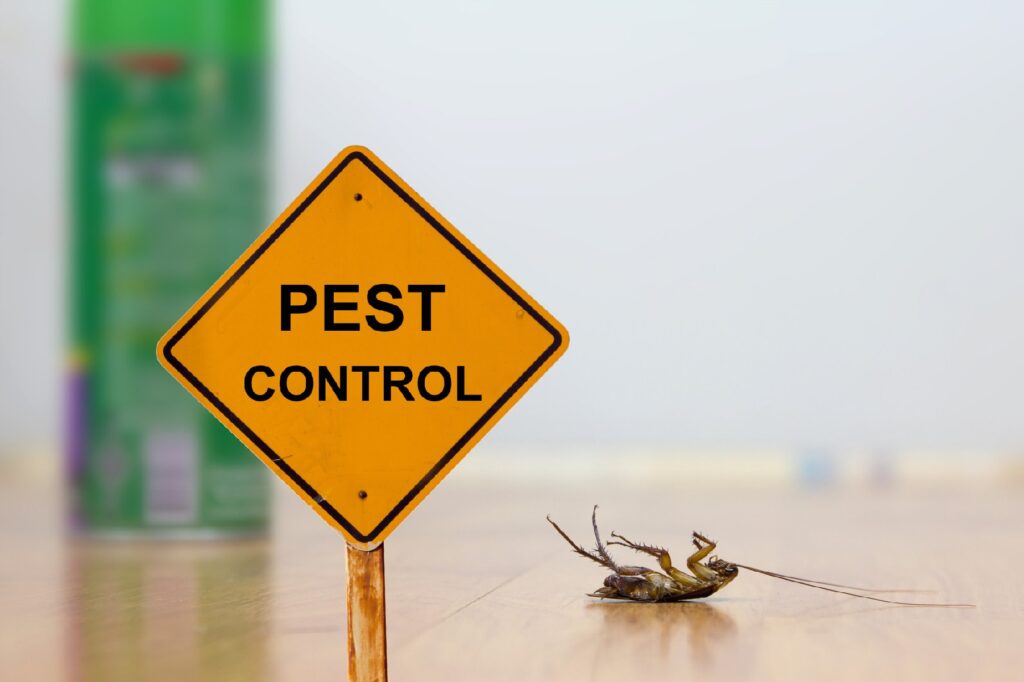A Comprehensive Guide to the Different Sorts Of Pest Control Approaches
With the myriad of bug control approaches available, it can be frustrating to discover the most efficient option for a particular bug problem. In this extensive guide, we will certainly discover these various types of insect control approaches, using understandings right into their applications and advantages. By the end, you will certainly have a clearer understanding of which method may be the ideal fit for your pest control demands.
Chemical Insect Control Techniques

One common type of chemical pest control is insecticides. Insecticides target details bugs, such as insects, termites, or ants, and can be utilized both inside your home and outdoors.
An additional kind of chemical parasite control is rodenticides. These are chemical materials created to control populations of rats, such as rats and mice.
Weed killers, also referred to as herbicides, are an additional sort of chemical pest control technique. Herbicides are developed to uniquely eliminate unwanted plants, called weeds, without causing injury to desirable plants. They are commonly made use of in agriculture, landscape design, and gardening to regulate the growth of undesirable plant life.
While chemical pest control approaches can be extremely reliable in getting rid of parasites, it is necessary to use them carefully and adhere to safety standards. Overuse or misuse of chemical pesticides can have adverse influence on human wellness and the setting. It is essential to utilize these approaches properly and think about different pest control techniques whenever possible.
Organic Bug Control Techniques
Biological pest control approaches include making use of living microorganisms or natural compounds to take care of and control pest populaces. Unlike chemical methods, which commonly count on artificial pesticides, biological control methods make use of the all-natural enemies of insects to control their populations. This strategy is considered more eco-friendly and sustainable, as it decreases making use of dangerous chemicals and lessens the risk of chemical resistance.
One extensively used biological insect control method is the intro of natural predators or bloodsuckers. For instance, ladybugs are introduced to regulate aphids, while particular wasp varieties are launched to target caterpillars. These killers and parasites prey on pests, minimizing their numbers and stopping problems.
An additional organic control technique is using pathogens. Specific bacteria, viruses, and fungi can be used to infect and kill specific bugs. As an example, the microorganism Bacillus thuringiensis is generally made use of to manage caterpillars, as it creates toxic substances that are lethal to these parasites.
Biological control methods can additionally include the use of scents or natural substances that disrupt the breeding patterns of bugs. By interfering with their recreation, these techniques aid to reduce pest populations over time.
While biological parasite control techniques are generally reliable, they may call for longer periods to attain preferred outcomes compared to chemical approaches. Furthermore, careful consideration needs to be offered to the option and release of all-natural opponents to stop unintentional injury to valuable organisms or ecosystems.
Physical Bug Control Techniques
To effectively handle and visit this site regulate pest populations, alternate parasite control methods referred to as physical bug control methods are utilized. These techniques entail using physical obstacles, traps, or tools to prevent pests from accessing or harming residential or commercial property. One typical physical parasite control method is using displays or webs to maintain pests out of buildings or gardens. These screens are usually made from great mesh product that permits ventilation while avoiding bugs from getting in. Another physical bug control approach is the installation of fences or walls to keep larger parasites, such as deer or bunnies, out of gardens or agricultural fields. These barriers literally obstruct the bugs' access to the area, minimizing the capacity for damages. Additionally, subterranean termite control catches and tools can be used to capture or ward off bugs. For instance, sticky catches can be put in locations where bugs are an issue, and the bugs end up being stayed with the glue surface area. Ultrasonic devices can also be made use of to send out high-frequency sounds that are undesirable to bugs, creating them to leave the location. Physical insect control techniques are an eco-friendly option to chemical pesticides, as they do not rely upon the usage of hazardous chemicals.
Natural Insect Control Approaches
All-natural insect control methods use a lasting and green method to handling and removing insects. One of the most common all-natural bug control techniques is biological control. By taking on these all-natural bug control approaches, people and neighborhoods can effectively manage insects while minimizing the negative influences on the setting and human health.
Integrated Insect Administration (IPM)
Integrated Insect Monitoring (IPM) is an extensive and systematic technique to pest control that combines numerous strategies and techniques to efficiently take care of insects while reducing the usage best termite control of chemical pesticides. IPM aims to preserve insect populations listed below the economic injury level by utilizing a mix of social, biological, and chemical control methods.
Social control approaches entail changing the setting to make it less beneficial for bugs. This can consist of methods such as plant turning, correct sanitation, and making use of immune plant varieties. By producing unfavorable problems for pests, cultural control techniques can significantly minimize bug populaces.

Chemical control methods are utilized as a last resource in IPM. They include the targeted and cautious use chemicals to handle bug populations. Unlike conventional bug control approaches, IPM aims to reduce using chemical pesticides by employing alternate techniques.
Integrated Parasite Monitoring (IPM) is an aggressive technique that concentrates on lasting bug monitoring as opposed to counting solely on responsive measures. By combining several control methods, IPM provides a more lasting and eco-friendly technique to pest control.
Verdict
Finally, this write-up has actually given an extensive overview of the different types of bug control methods. It reviewed chemical, biological, physical, and all-natural pest control methods, along with the integrated parasite monitoring approach. By comprehending these numerous methods, people can make enlightened choices on which pest control method is most ideal for their certain demands and preferences. Effective insect control is crucial in maintaining a healthy and pest-free environment.
Comments on “Reliable Pest Control Chicago: Trusted Specialists for Your Home or Organization”